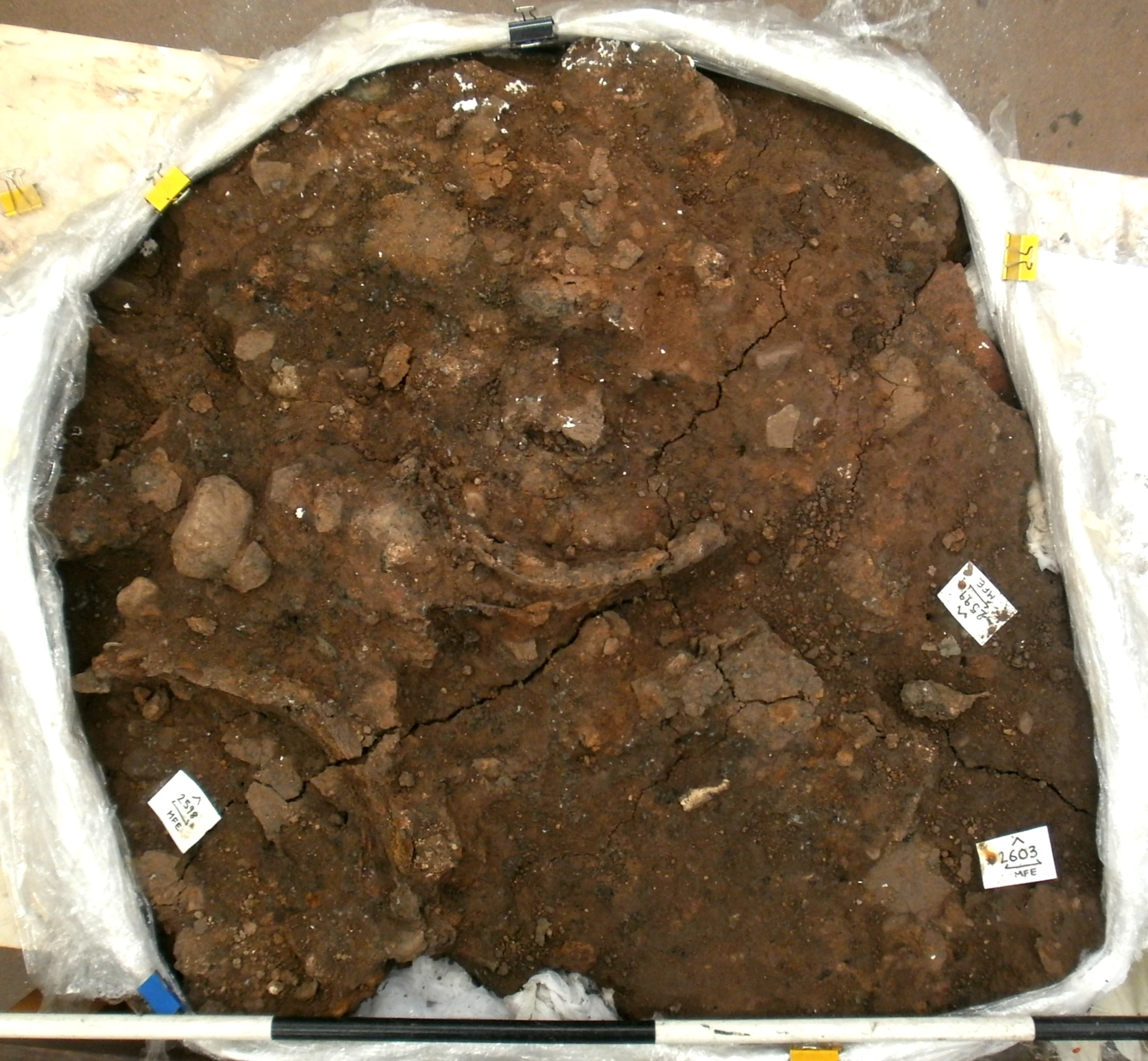Conservation of Roman Armour- Opening the Block
10 May 2011
After wheeling the large block into the archaeological conservation laboratory, I began the task of removing the plaster bandages covering the top of the block.
This proved a simple and satisfying job- the bandages were easily torn off in layers, revealing the Clingfilm barrier underneath. In order to reinforce the sides of the block, yet more bandages were wetted and wrapped around it.
The next step in opening up the block was to peel back the Clingfilm. This had to be done very carefully, as I didn't want dust from the plaster covering the archaeological artefacts beneath. Pegs and bulldog clips were very useful in holding back the plastic layers neatly.
After much anticipation, the armour was revealed. As I had not been present during removal of the armour from the fort, this was the first time I was able to see the lorica, and I was very impressed by the corroded remains.
As I excavate the armour contained within this soil block, I have to document every individual feature, and the physical relationships between all the artefacts. This provides invaluable information for the archaeologists working on the project, who want to tell the story of Isca.
This documentation process involves taking many photographs and making copious notes day by day; before I even begin to excavate the block using small hand tools, I drew a plan of the whole block, at a 1:2 scale. It was easiest to do this by laying string across the top of the block, and drawing it in sections.
After all this preparation, I cannot wait to get started excavating the soil overlying the armour and other artefacts- though this will take a very long time.



